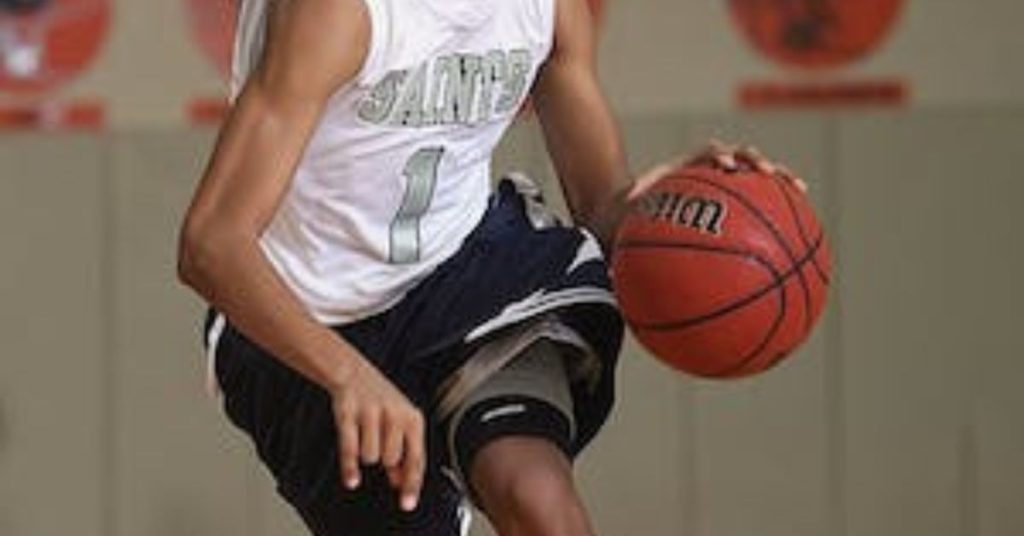Baseball cleats typically have a metal spike at the toe, while softball cleats do not. The materials and design also differ between the two sports.
Deciding on the correct type of athletic footwear is paramount for athletes aiming to maximize performance and safety. Baseball and softball, while similar in many respects, feature distinct cleat designs tailored to their unique playing conditions. Baseball cleats often incorporate metal spikes that provide traction and speed on the diamond’s dirt infields and grass outfields.
Softball cleats, conversely, usually have plastic or rubber cleats and exclude the toe spike, adhering to the sport’s specific safety regulations and playing style. These differences are crucial for players to consider when selecting their gear, as the right cleats can significantly affect their ability to move and play effectively. Understanding these nuances ensures athletes make informed decisions, thereby enhancing their game and reducing the risk of injury on the field.

Credit: about.underarmour.com
The Basics Of Baseball And Softball Cleats
Baseball and softball cleats look similar. Both are important for grip and speed on the field. They are different, though. Important parts are materials, spikes, and design. The right choice helps athletes play better and safer. Let’s explore how they differ.
Distinguishing Features Of Baseball Cleats
- Spikes: Typically metal or plastic, pointed for grip.
- Design: Built for quick motions, like sprinting or stopping.
- Materials: Usually synthetic or leather uppers for durability.
- Ankle Support: High-tops offer more, while low-tops give flexibility.
- Toe Reinforcement: Extra layer to protect during slides.
Characteristics Of Softball Cleats
- Spikes: Often plastic, for softer field conditions.
- Design: Focus on comfort and stability for longer games.
- Materials: Breathable fabrics for comfort in varied weather.
- Ankle Support: Options vary, less focus on high-tops.
- Toe Protection: Less reinforcement compared to baseball.
Historical Evolution Of Cleats
The chase for better performance in baseball and softball has shaped the design of cleats over time. From their inception to the technological advancements today, cleats have come a long way. The historical evolution of cleats traces back to a desire for improved traction and agility on the field. Let’s dive into the journey of how these essential sports accessories evolved.
Timeline Of Baseball Cleat Innovations
- 19th Century: Metal spikes affixed to shoes embark the cleat era.
- 1940s: Removable spikes become a game-changer.
- 1970s: Synthetic materials replace leather, creating lighter cleats.
- 1990s: The introduction of plastic molded cleats boosts versatility.
- 21st Century: High-tech enhancements lead to tailor-made, spike patterns.
Softball Cleat Development
- Early 20th Century: Softball players adapt existing baseball cleats.
- Mid-20th Century: Specialized designs for women emerge.
- 1980s: Introduction of lighter, more comfortable options.
- 2000s: Focus on ankle support and power enhancement gains traction.
Cleat Design And Materials
When choosing cleats for baseball or softball, design and materials matter. Differences in construction impact performance and comfort on the field. Let’s dig into the specifics of cleat design and the materials that make them up.
Materials Used In Modern Cleats
Today’s cleats combine innovation with durability. Manufacturers use a variety of materials:
- Synthetics like polyester and nylon for lightweight flexibility
- Genuine leather for a comforting fit that molds to the foot over time
- Thermoplastic polyurethane (TPU) for outsole strength and durability
- Mesh sections to allow feet to breathe
- Metal, plastic, or rubber for the cleat spikes
Selection varies from brand to brand, aiming for the ideal mix of performance, comfort, and longevity.
Ergonomics And Cleat Design
Cleat design is not just about style; it focuses on foot health and efficiency. Let’s break down ergonomics in modern cleats:
| Ergonomic Feature | Function |
|---|---|
| Arch support | Prevents foot pain and injury |
| Heel cushion | Absorbs shock, reduces fatigue |
| Wide toe box | Allows for natural foot movement |
| Ankle support | Provides stability, prevents rolls |
| Flexible sole | Improves traction, allows quick sprints |
Cleat designs also address different types of gait, weight distribution, and playing surfaces. Each feature adds to a cleat’s ability to enhance a player’s performance and safety on the field.

Credit: about.underarmour.com
Cleat Spikes: Metal Vs Plastic
Choosing the right cleats for baseball or softball could mean the difference between slipping on the field or making that game-winning play. Cleats come with either metal or plastic spikes, each offering unique benefits. Offering grip and stability, the spikes’ material greatly impacts your game.
Advantages Of Metal Spikes
Metal spikes provide superior traction on the field. Cats wearing these cleats generally find them helpful for:
- Digging into hard dirt and clay, especially for pitchers and base-stealers.
- Maintaining balance and grip on wet or slippery surfaces.
- Improved performance due to better starts and stops.
Professional players often prefer metal spikes because they offer enhanced performance.
Benefits Of Plastic Or Rubber Spikes
Plastic or rubber spikes are popular for their safety and versatility. These cleats support a wide range of players:
- Youth leagues often mandate plastic spikes for safety.
- They reduce the risk of injury from accidental spikes.
- Plastic cleats are generally more affordable and durable.
These cleats are great for both indoor and outdoor surfaces. Many players find the comfort and safety of plastic spikes preferable for regular play.
Performance Impact On The Field
On the diamond, players need the right gear for top performance. Baseball and softball cleats are different. They change how players move and play. Understanding these differences can help players choose the best cleats. This leads to better games. Let’s explore these differences.
Traction And Speed Considerations
Traction and speed are critical in both baseball and softball. Cleats must grip the ground well. Good traction helps players run faster. It keeps them from slipping. Baseball and softball cleats differ here. Let’s see how:
- Baseball cleats usually have a metal spike. These dig into dirt and grass well.
- Softball cleats often use rubber or plastic. They’re good for the softer infields in softball.
| Cleat Type | Material | Traction | Speed |
|---|---|---|---|
| Baseball | Metal | High | High |
| Softball | Rubber/Plastic | Medium | Medium |
Influence On Batting And Fielding
The cleat choice also affects batting and fielding.
- Stability in the batter’s box is key. Baseball cleats provide a firm stance. This helps players swing with power.
- Fielders need to start and stop quickly. Softball cleats should offer quick movements despite sudden plays.
Both types support the player’s skill. They impact how fast a player reacts. They also affect how powerfully they hit.
Rules And Regulations
Rules and Regulations play a vital role in distinguishing baseball and softball. These sports may share similarities, but distinct guidelines exist for their cleats. Understanding these differences ensures players meet league requirements and prioritize safety.
League Specific Regulations
Leagues for both baseball and softball often implement their own set of rules for cleats. It’s critical for players to adhere to these to avoid penalties.
- Baseball often allows metal cleats; ideal for traction.
- Softball usually limits to plastic or rubber cleats, especially for younger levels.
It’s essential to check with specific league regulations before purchasing. This ensures compatibility and prevents disqualification on game day.
Safety Standards For Cleat Design
All cleats must meet safety standards. These requirements aim to protect players from injury.
| Cleat Type | Safety Feature |
|---|---|
| Metal Cleats | Designed to prevent slips and provides stability |
| Plastic/Rubber Cleats | Offer flexible movement and reduce pressure points |
Manufacturers are obligated to ensure cleat designs do not pose risks to players. They also must adhere to strict testing for performance and durability.
Selecting The Right Cleats
Selecting the right cleats for your sport is crucial for performance and safety. Understanding the differences between baseball and softball cleats can help make an informed choice. Let’s explore the key factors to consider when purchasing the perfect pair.
Factors To Consider When Buying
- Style: Baseball cleats come in low-top and mid-top variations, while softball often features low-top designs.
- Spike Material: Metal spikes are common for baseball; however, many softball leagues prefer plastic or rubber cleats for safety.
- Fit: Ensure the cleats fit snugly but not too tightly to avoid discomfort or injury.
- League Requirements: Always check your league’s rules on cleats type to avoid penalties.
Customization And Personal Preference
Different athletes desire different features in their cleats. Color, comfort level, and brand loyalty are personal preferences that often sway the decision.
Custom cleats are also an option for those seeking a unique twist. Personal touches to design can offer a psychological edge and enhance enjoyment of the game.
Maintenance And Care For Cleats
Maintenance and care are crucial for both baseball and softball cleats. Keeping your cleats in top shape means they’ll last longer and perform better. Whether you are sliding into home plate or sprinting to catch a fly ball, well-maintained cleats can make a significant difference.
Best Practices For Cleat Longevity
Good habits start from day one. Always knock off excess dirt after each use. Undo the laces before taking off your cleats. This prevents stretching and wear. Let your cleats air out after games and practices. Avoid walking on hard surfaces to keep cleats sharp.
- Knock off dirt after play
- Undo laces before removing
- Air out between uses
- Walk on soft surfaces only
Cleaning And Storage Tips
Cleanliness extends cleat life. Use a soft-bristled brush and soapy water for regular cleaning. Make sure to remove all soap before drying. Dry your cleats naturally, away from direct heat. Store cleats in a cool, dry place and stuff them with newspaper to maintain shape.
| Action | Tip |
|---|---|
| Cleaning | Soft brush and soapy water |
| Drying | Air dry away from heat |
| Storage | Cool, dry area with newspaper inside |

Credit: www.amazon.com
Frequently Asked Questions On What Is The Difference Between Baseball And Softball Cleats
Can I Wear Softball Cleats For Baseball?
Yes, you can generally wear softball cleats for baseball, but they might not provide the same level of traction as baseball-specific cleats. Check league regulations to ensure they allow softball cleats.
What Is The Difference In Softball Cleats?
Softball cleats often have rubber or plastic spikes for flexibility and comfort, unlike baseball cleats which typically feature metal spikes for enhanced traction on dirt infields and grass.
Is There A Difference In Baseball Cleats?
Yes, baseball cleats differ in design. Metal, molded plastic, and turf cleats cater to various field types and player levels, enhancing performance and traction.
Conclusion
Understanding the distinctions between baseball and softball cleats can enhance your game. Each sport’s footwear is designed with its unique play style in mind. Choose the right cleats, and you’ll improve traction, comfort, and performance on the field. Remember, selecting between baseball and softball cleats isn’t just about preference, it’s about playing to your full potential.

Hello, I am Mark Hertz a full-time blogger and digital content creator. My passion and profession is blogging and sharing with this blog various ways to make money online from internet.


